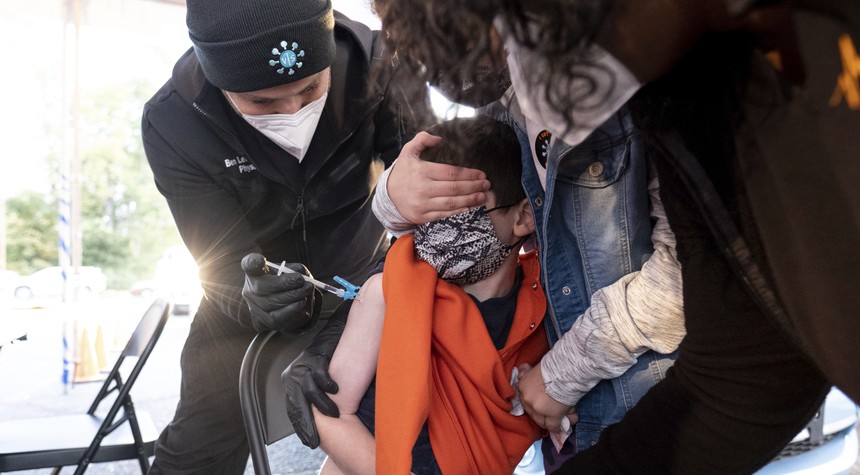America's most vaccinated state is seeing its highest cases of the pandemic
Between this data and the fact that cases are skyrocketing in parts of Europe, it seems likely that we’re going to have a winter wave in the U.S. after all.
A wave of cases, that is. The jury’s out on whether hospitalizations and deaths will follow at the same clip as they have in the past.
Still, this result from Vermont is depressing, if not surprising. It’s been clear for months that protection against transmission after you’re vaccinated wanes over time, although protection from severe illness thankfully wanes much more slowly. In that sense, Vermont’s spike barely qualifies as news: If immunization doesn’t absolutely prevent infection, particularly with a hyper-contagious variant like Delta, why wouldn’t a state with a high vaccination rate see a surge in cases?
While you’re looking at those curves, bear in mind that Vermont is small. The recent “spike” in deaths didn’t even reach an average of three per day. But as you can see, hospitalizations are almost as high now as they were last winter, during America’s hardest stretch of the pandemic. A very high vax rate is no guarantee, even now, that your state won’t see a wave of severe disease. There are still too many people with no or low immunity, whether because they’re unvaccinated or they’re elderly and their vaccine protection has faded, to prevent major outbreaks.
Colorado
isn’t as heavily vaccinated as Vermont is, with 62 percent of the
population having been jabbed versus Vermont’s 72 percent, but that’s
good enough for landing in the top 15 of the 50 states. When you factor
in natural immunity it must be that well over 70 percent of the state’s
population that has immunity of some type or another. And yet:
Cases are approaching peak levels, hospitalizations aren’t far behind, and even deaths are on their way up. “The ERs are packed” there, said the dean of the University of Colorado’s school of public health, warning that his university’s hospital was beyond capacity last week and doesn’t have much room to expand to meet further demand. Twenty months after the pandemic began and nearly a year after the vaccines started rolling out, states are still having to resort to crisis measures to cope with COVID.
How’s it going in Europe among countries with higher vaccination rates than ours, meanwhile? Not great:
Europe as a whole had more cases last week than the U.S. and Canada did, further evidence that whatever the magic number is for population immunity to suppress the virus, apparently no one is there yet. Germany in particular is seeing its highest number of cases of the entire pandemic, which scientists blame on the fact that they haven’t yet reached 70 percent vaccinated across the population. (The U.S. is nowhere close to that mark either.) Thankfully, the death rate is still just 15 percent or so of what it was at last winter’s peak, but if it’s true that the unvaccinated are driving the spike in cases then that’s destined to change soon too.
Some European countries are talking about lockdowns again to stop the spread. One, Austria, is discussing a lockdown of the unvaccinated, specifically. If they’re struggling with COVID despite having higher vaccination rates than we have, odds are good that a winter wave is headed our way. And in fact, after declining for many weeks, cases in the U.S. have recently leveled off and begun to inch up again:
Much has been written lately about the U.S. transitioning from “pandemic COVID” to “endemic COVID,” when cases and deaths fall to low but steady-ish numbers with occasional flares. I, uh, hope that’s not true yet. Right now we’re sitting at 75,000 cases and 1,200 deaths per day. A few weeks ago one scientist predicted that endemic COVID would produce 40,000 to 100,000 deaths in the U.S. annually, for an average of around 275 per day on the high end. But at the rate we’re currently seeing people die, endemic COVID would mean around 438,000 deaths. Every year. “There is more than enough human wood for this coronavirus forest fire to burn,” said Michael “Dr. Doom” Osterholm to Axios about the next few months, guesstimating that 70 million Americans remain vulnerable.
There is one hopeful note, though. After a nasty summer wave in which its cases per capita doubled those in the U.S. at one point, Israel has seen COVID recede again:
Deaths per capita have fallen nearly tenfold there since September. The mystery: Is that because booster shots have restored population immunity…
A sign of how Israel has crushed its Delta wave: Of all infections (PCR+, symptomatic or not) in the last month, 61% have been among those under 20 years old. In recent days, over 80% of all cases have been unvaccinated…most likely because they are children too young for vax. pic.twitter.com/nA380AEgpE
— Aaron Astor (@AstorAaron) November 11, 2021
Source: HotAir











